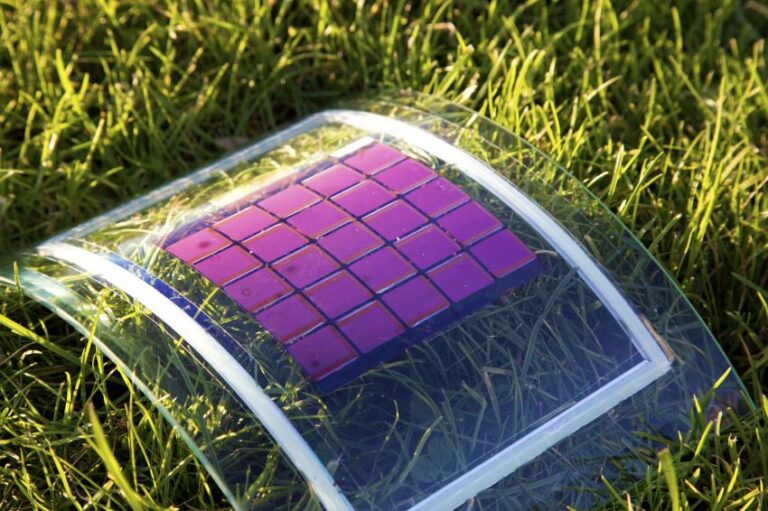
The global energy landscape is rapidly transforming, with renewable energy sources becoming more prominent in the pursuit of sustainability. Among these renewable technologies, solar energy holds the most promise for creating a clean, green future. Within the solar energy sector, polymer solar cells market have emerged as a game-changing innovation. PSCs are gaining attention due to their lightweight, flexible nature, and cost-effective production compared to traditional silicon-based solar cells. This PR content explores the current trends in the polymer solar cell market, the driving forces behind its growth, and the various applications that make it a vital part of the renewable energy revolution.
Key Market Trends and Drivers
- Growing Demand for Clean Energy As global awareness of climate change and environmental degradation intensifies, countries worldwide are adopting policies to promote the use of renewable energy sources. Solar energy has been at the forefront of these efforts, and polymer solar cells have become an appealing alternative due to their low-cost and environmentally friendly production. PSCs utilize organic polymers, which can be synthesized at lower temperatures than the silicon used in traditional solar panels, reducing energy consumption during manufacturing.
The rising demand for clean, renewable energy sources has led to a surge in interest in polymer solar cells. They are particularly suited for decentralized power generation, enabling users to produce energy on-site in residential, commercial, and even remote locations.
- Cost Efficiency and Flexibility One of the most attractive features of polymer solar cells is their cost efficiency. Unlike conventional silicon-based solar panels, PSCs can be fabricated using roll-to-roll printing techniques, similar to how newspapers are printed. This process allows for large-scale production at a fraction of the cost, which is essential in making solar energy more affordable and accessible to a wider audience.
Additionally, polymer solar cells are flexible and lightweight, making them versatile for applications where traditional rigid solar panels would be impractical. Their flexibility opens up new possibilities for solar energy generation on curved or irregular surfaces, which will be explored in greater detail in the applications section.
- Technological Advancements in Efficiency While polymer solar cells have long been valued for their potential, one of the challenges has been improving their energy conversion efficiency. Traditional silicon solar cells can achieve high efficiency rates (around 20-25%), while earlier versions of PSCs lagged behind. However, significant progress has been made in recent years, with ongoing research focusing on enhancing the efficiency of PSCs to rival or surpass traditional solar technologies.
Innovations in polymer chemistry, device architecture, and material design are driving improvements in performance, making PSCs a more competitive option for large-scale energy generation. As research continues to refine these cells, the gap between PSCs and traditional solar panels is expected to narrow further, positioning PSCs as a future leader in the solar market.
- Sustainability and Environmental Impact Beyond cost and efficiency, PSCs are highly appealing from an environmental standpoint. The manufacturing of traditional solar panels often involves the use of hazardous chemicals and energy-intensive processes. In contrast, polymer solar cells can be produced with less environmental harm, using fewer toxic materials and requiring lower energy input.
This environmental advantage aligns with the growing push for sustainability in manufacturing processes, helping PSCs gain traction among environmentally conscious consumers, companies, and governments. Additionally, the reduced carbon footprint during the production phase further strengthens the appeal of PSCs as a sustainable solution for harnessing solar energy.
Detailed Market Study: Full Report and Analysis
Applications of Polymer Solar Cells
The versatility of polymer solar cells opens up a wide range of applications across various sectors, including residential, commercial, and industrial uses. As a flexible and lightweight alternative to traditional solar technologies, PSCs can be integrated into environments and products that would be difficult to equip with conventional solar panels.
- Building-Integrated Photovoltaics (BIPV) One of the most promising applications for polymer solar cells is in building-integrated photovoltaics (BIPV). BIPV refers to solar technologies that are seamlessly integrated into the building structure, allowing for clean energy generation without the need for bulky external solar panels. The lightweight, flexible nature of PSCs makes them an ideal candidate for use in a wide range of BIPV applications, including on facades, roofs, and windows.
Polymer solar cells can be applied as thin films, turning entire buildings into power generators. This application is particularly attractive in urban environments where space is limited, and integrating solar cells into building materials reduces the need for dedicated solar farms.
- Portable and Wearable Electronics The growing demand for portable and wearable electronics has created opportunities for integrating flexible solar cells into everyday devices. Polymer solar cells, with their lightweight and flexible characteristics, can be used to power electronic devices such as smartphones, smartwatches, and other wearables, ensuring that these devices can remain charged on the go.
PSCs can also be used in portable solar chargers and battery packs, providing users with a renewable energy source wherever they are. This application is especially useful in outdoor and remote environments, where access to the grid may be limited.
- Agriculture and Greenhouses Another exciting application for polymer solar cells is in agriculture, particularly in greenhouses. PSCs can be integrated into greenhouse structures without obstructing sunlight, allowing crops to continue growing while generating electricity. This dual-use approach maximizes land efficiency and provides farmers with an on-site renewable energy source.
The lightweight and semi-transparent properties of polymer solar cells make them ideal for agricultural applications, where traditional rigid panels would block sunlight or add significant weight to the structure. With increasing attention on sustainable farming practices, polymer solar cells offer a unique solution to reduce carbon emissions in agriculture.
- Transportation The transportation sector is another area where polymer solar cells are finding innovative applications. PSCs can be used in electric vehicles (EVs), boats, drones, and even aircraft to supplement traditional power sources with solar energy. The integration of lightweight and flexible solar cells into vehicles helps extend their range and reduce reliance on charging infrastructure, making transportation more sustainable.
For electric vehicles, PSCs can be applied to the surface of the car, charging the vehicle’s battery while parked or in motion. This application is particularly appealing in regions with high solar irradiance, where vehicles can harness energy from the sun throughout the day.
- Consumer Goods Polymer solar cells are also making their way into various consumer goods, offering users a more sustainable way to power everyday items. From backpacks with integrated solar panels to solar-powered outdoor lighting, PSCs are enabling a new generation of energy-efficient products. These solar-powered gadgets cater to eco-conscious consumers and offer the convenience of off-grid power in a variety of scenarios.
The flexibility and cost-effectiveness of PSCs make them a natural fit for mass-market consumer goods, where durability and aesthetics are critical.
Challenges and Opportunities
Despite the exciting potential of polymer solar cells, the market still faces challenges. One of the primary obstacles is improving the long-term stability and lifespan of PSCs, as they are currently more susceptible to degradation compared to traditional silicon solar cells. However, ongoing research is addressing these issues by developing new materials and protective coatings that can enhance the durability of PSCs.
Additionally, while efficiency rates have improved, there is still room for further enhancements to make PSCs even more competitive with other solar technologies. Governments and research institutions around the world are investing in polymer solar cell research, creating opportunities for breakthroughs in both performance and cost.
On the flip side, the flexibility, lightweight nature, and ease of manufacturing of PSCs present enormous opportunities for innovation. As the global focus on renewable energy intensifies, the polymer solar cell market is likely to grow rapidly, particularly in niche applications where traditional solar panels are unsuitable.
Global Polymer Solar Cells Market: Competition Analysis
The global polymer solar cells market has included several key players involved in the manufacturing and supply of polymer solar cells. The report has profiled companies such as Heliatek GmbH, InfinityPV ApS, BELECTRIC OPV GmbH (OPVIUS GmbH), SUNEW, Solarmer Energy, Inc., Armor Group, Solvay S.A., Eight19 Ltd., SolarWindow Technologies, Inc., and Raynergy Tek Incorporation.
Regional Analysis:
By region, Asia Pacific excluding Japan (APEJ) region is anticipated to dominate the global polymer cells market with respect to high market share during the forecast period. This region is projected to grow at the highest CAGR of 24.6% throughout the period of assessment 2017-2027. The main contributor is China, which shows high potential and is the fastest growing country with a high CAGR of 25.5% during the forecast period. North America, Japan and Western Europe also poised to show significant growth in the coming years
By product type, the multi-junction segment is expected to grow at a higher pace than any other segments during the assessment period. However, the bulk heterojunction segment is estimated to show higher market share thus leading the global polymer solar cells market
By technique, the printing segment is expected to show a high market share and high growth rate than the coating segment, to reach a value a little under USD 240 Mn and is poised to register a robust CAGR throughout the forecast period
With respect to the application category, the BIPV segment is poised to grow at the highest rate to register a CAGR of 23.3% during the assessment period. It is also anticipated to witness high market share, thus leading the global polymer solar cells market by application
Market Segmentation
Junction Type
- Single Layer
- Bilayer
- Bulk Heterojunction
- Multi-junction
- Others
Application
- BIPV (Building Integrated Photovoltaic)
- Consumer Electronics
- Automotive
- Defence and Emergency
- Others
Technique
- Printing Technique
- Coating Technique
Region
- North America
- Western Europe
- Eastern Europe
- Latin America
- APEJ
- Japan
- MEA
About Future Market Insights (FMI)
Future Market Insights, Inc. (ESOMAR certified, recipient of the Stevie Award, and a member of the Greater New York Chamber of Commerce) offers profound insights into the driving factors that are boosting demand in the market. FMI stands as the leading global provider of market intelligence, advisory services, consulting, and events for the Packaging, Food and Beverage, Consumer, Technology, Healthcare, Industrial, and Chemicals markets. With a vast team of 400 analysts worldwide, FMI provides global, regional, and local expertise on diverse domains and industry trends across more than 110 countries.
Contact Us:
Future Market Insights Inc.
Christiana Corporate, 200 Continental Drive,
Suite 401, Newark, Delaware – 19713, USA
T: +1-845-579-5705
For Sales Enquiries: sales@futuremarketinsights.com
Website: https://www.futuremarketinsights.com
LinkedIn| Twitter| Blogs | YouTube




